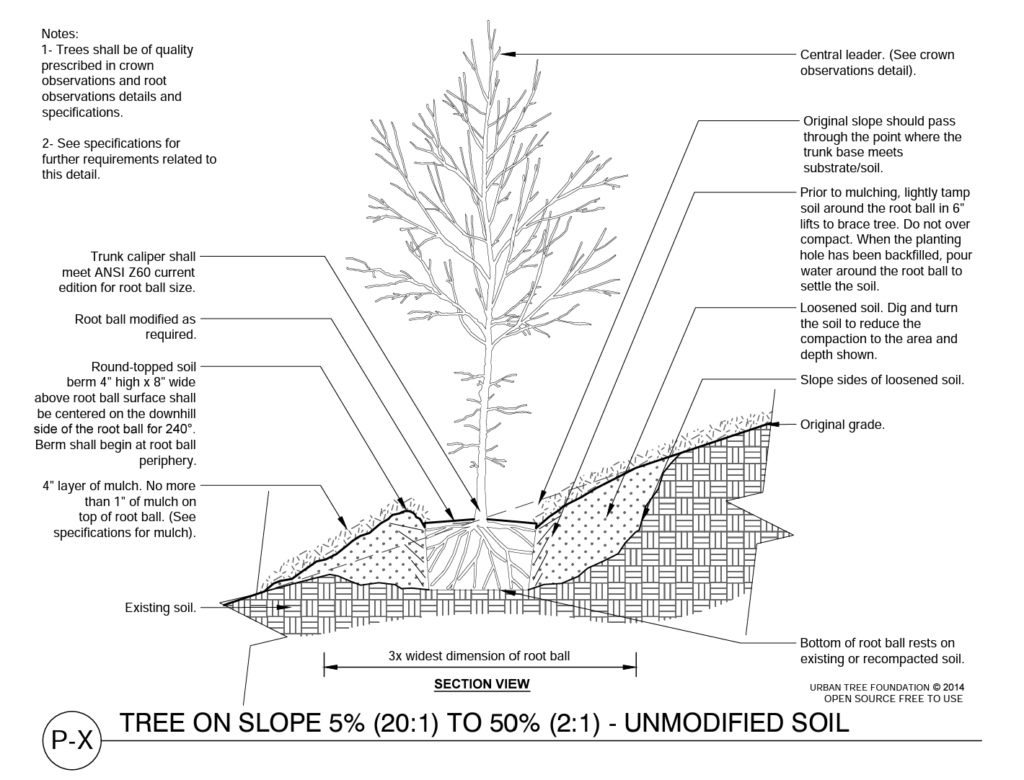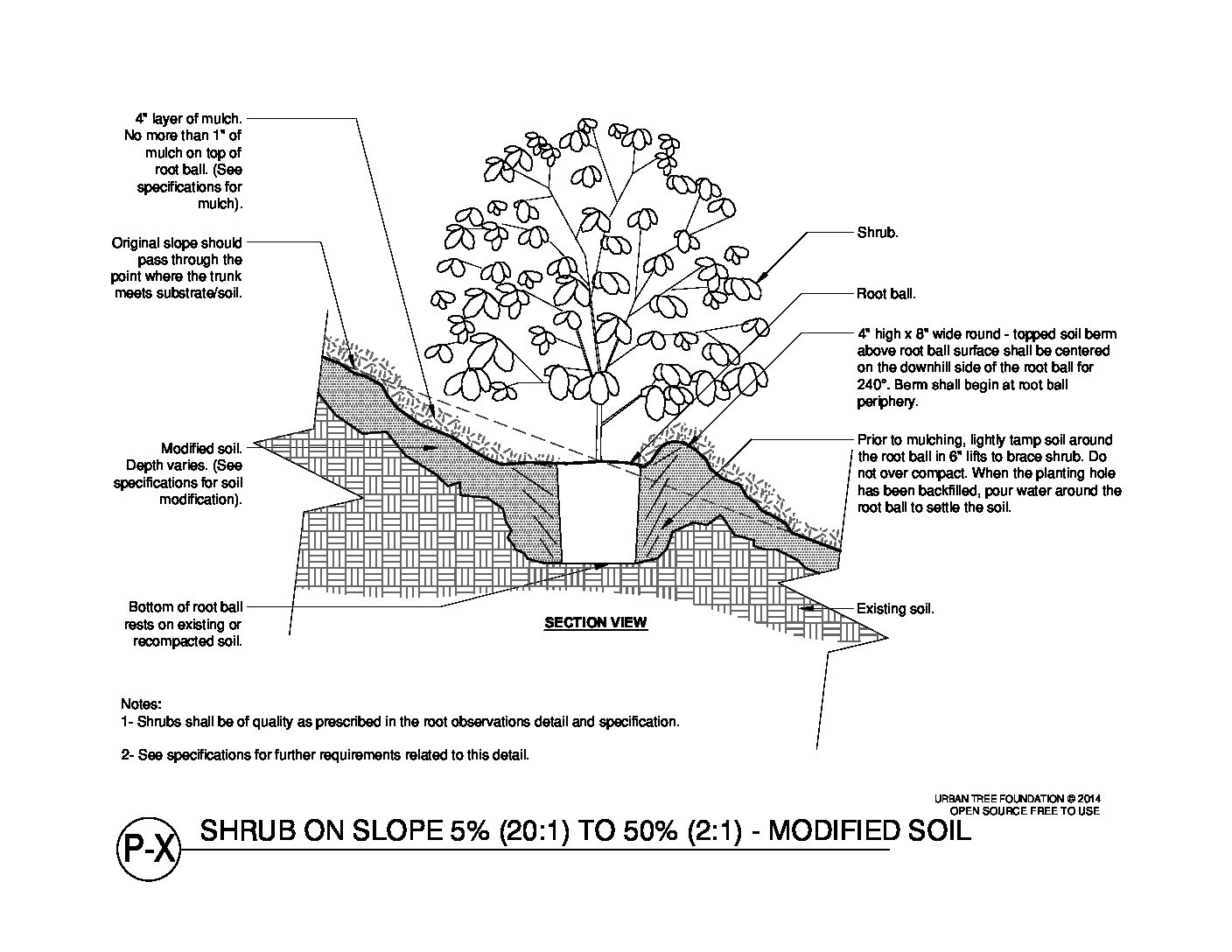Regardless of how you water, you will want to create a berm, or raised “dam,” on the downside when planting on a slope. This berm captures any rainfall coming down the slope, detaining it long enough to soak in, and also holds water that comes from irrigation or hand-watering. By cutting away part of the slope on the upside of the plant, there’s additional room to capture and retain more water. Our diagram (put the word “above” or “below” here, as is appropriate) shows these methods using a berm with wood mulch. Our preference is to create the berm out of soil and apply shredded wood mulch inside the well created by the berm because shredded wood mulch will help moisture stay longer in the soil.
If you are watering plants by hand, turn down the pressure and place the hose on the uphill side of the plant so the water runs into the well and the berm slowly. By doing it this way, you will have to repair the well and berm less frequently. If you are watering with a bubbler or drip system, always make sure that the bubblers or emitters are placed on the upside of the slope and the plant so the water comes down the slope into the well and has a chance to penetrate the root zone located in the well and bermed area. Finally, if you are watering plants on a slope with Netafim (in-line emitter drip tubing), you can place the loops or grid of tubing throughout the well area, held in by the berm. The water will drip very slowly and be contained within the bermed well.
Having grass on slopes is discouraged because it is very difficult to keep your grass healthy without watering inefficiently. If you need to water grass on slopes, please carefully check out the section of our irrigation efficiency guide on cycle and soak.
By following these simple steps, you should be able to efficiently water and successfully plant on a slope.

Learn More Here:
Steps for Improving Your Irrigation Efficiency
Drip Irrigation Maintenance Checklist
Yes, you can afford and irrigation system


